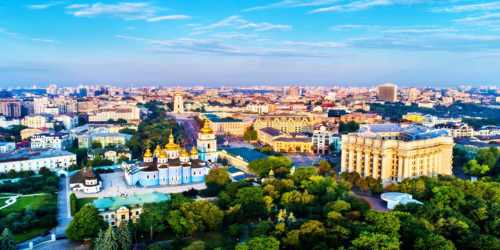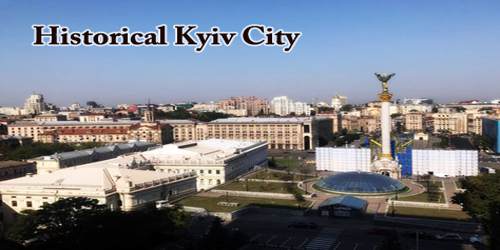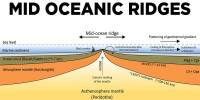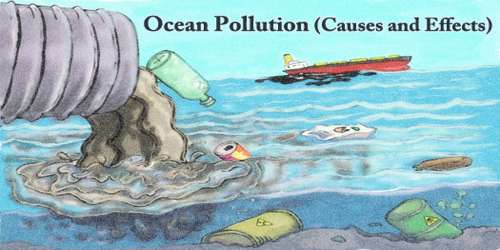Kyiv(a) or Kiev (Ukrainian: Київ, romanized: Kyiv; Russian: Киев, romanized: Kiyev), chief city and capital of Ukraine, that picturesquely spreads on the Dnipro river hills. Its population in July 2015 was 2,887,974 (though higher estimated numbers have been cited in the press), making Kiev the sixth-most populous city in Europe.
A port on the Dnieper (Dnipro) River and a large railroad junction, it is a city with an ancient and proud history. As the centre of Kyivan (Kievan) Rus, the first eastern Slavic state, 1,000 years ago, it acquired the title “Mother of Rus Cities.” It was severely damaged during World War II, but by the mid-1950s it had been restored, and in the second half of the 20th century it enjoyed a well-developed economic and cultural life. The independence of Ukraine from the Soviet Union in 1991 renewed Kyiv’s status as a major European capital.
Kyiv (Kiev) is an important industrial, scientific, educational and cultural center of Eastern Europe. It is home to many high-tech industries, higher education institutions, and historical landmarks. The city has an extensive system of public transport and infrastructure, including the Kiev Metro.

As others old cities Kyiv has no exact date of foundation. According to the legend, Kyiv was founded more than 1,500 years ago by three brothers Kyi, Schek, Khoryv and their sister Lybid. The city was named after the oldest brother Kyi. In the 9th century Kyiv became the capital of the Ancient Rus. The territory of this independent state stretched out from the Baltic Sea in the North to the Black Sea in the South and from Volga River in the East to the Carpathians Mountains in the West. Kyiv is often referred as “the mother of all cities” by Russians and Ukrainians and as a cradle of Slavonic civilization.
Under Varangian rule, the city became a capital of the Kievan Rus’, the first East Slavic state. Completely destroyed during the Mongol invasions in 1240, the city lost most of its influence for the centuries to come. It was a provincial capital of marginal importance in the outskirts of the territories controlled by its powerful neighbours, first Lithuania, then Poland and Russia.
The city prospered again during the Russian Empire’s Industrial Revolution in the late 19th century. In 1918, after the Ukrainian National Republic declared independence from Soviet Russia, Kiev became its capital. From 1921 onwards Kiev was a city of the Ukrainian Soviet Socialist Republic, which was proclaimed by the Red Army, and, from 1934, Kiev was its capital. The city was almost completely ruined during World War II but quickly recovered in the postwar years, remaining the Soviet Union’s third-largest city.
Considering population Kyiv is among the 10 largest cities of Europe. Its historical path is related to the great political and cultural events in Europe and represented in many age-old architectural monuments. 2148 objects of history and culture are located on the territory of Kyiv. Among them are over 100 museums 33 theatres and theatres-studios 53 cultural buildings 140 libraries, 20 concert organizations and independent musical collectives that are working in the capital of Ukraine.
The city stands on the Dnieper River just below its confluence with the Desna and 591 miles (951 km) from its mouth in the Black Sea. The original location was on the high and steep right (western) bank, which rises above the river in an imposing line of bluffs culminating in Batyyeva Hill, 330 feet (100 meters) above mean river level. This precipitous and wooded bank, topped by the golden domes and spires of churches and bell towers and by high-rise apartment buildings, makes the city an attractive and impressive sight from across the Dnieper. Since World War II, Kyiv has extended onto the wide, low, and flat floodplain on the left (eastern) bank.
Kiev has a warm-summer humid continental climate (Köppen Dfb). The warmest months are June, July, and August, with mean temperatures of 13.8 to 24.8 °C (56.8 to 76.6 °F). The coldest are December, January, and February, with mean temperatures of −4.6 to −1.1 °C (23.7 to 30.0 °F). The highest ever temperature recorded in the city was 39.4 °C (102.9 °F) on 30 July 1936. The coldest temperature ever recorded in the city was −32.9 °C (−27.2 °F) on 11 January 1951. Snow cover usually lies from mid-November to the end of March, with the frost-free period lasting 180 days on average, but surpassing 200 days in some years.
Kiev, one of the oldest cities of Eastern Europe, played a pivotal role in the development of the medieval East Slavic civilization as well as in the modern Ukrainian nation. Kiev is the traditional and historically most commonly used English name for the city. Kyiv is used officially by the city, and it is gaining in frequency in English-language sources. As a prominent city with a long history, its English name was subject to gradual evolution. The spelling Kiev was derived from the Old East Slavic form Kyjevŭ (Cyrillic: Кꙑєвъ). The name is associated with that of Kyi (Кий), the legendary eponymous founder of the city. The Oxford English Dictionary included Kiev in a quotation by 1883, and Kyiv in 2018.
The city limits enclose an area of 300 square miles (780 square km) on both banks of the Dnieper. It is divided into a number of administrative wards. The focus of Kyiv is the area of the ancient Upper Town, crowning the high bluffs of the Dnieper. Although largely of postwar construction, this central area retains its old street pattern, and most of the surviving historical and architectural monuments are located there. First among these is the cathedral of St. Sophia, now a museum. It was built in the 11th century and remains, despite certain Baroque modifications in the 18th century, one of the finest and most beautiful examples of early Rus-Byzantine ecclesiastical architecture. It has a nave and four aisles and is crowned by five domes. The interior is magnificently decorated with frescoes and mosaics; it contains the tomb of Yaroslav I, the grand prince of Kyiv during whose reign the cathedral was built.
Close by is the Baroque church of St. Andrew, designed by Bartolomeo Rastrelli and built in the mid-18th century; its site on the crest of the steep slope to the river makes it a striking landmark. Other historical relics in the central area include the ruins of the Golden Gate, also built in the 11th century in the reign of Yaroslav; the Zaborovsky Gate, built in 1746–48; and the remains of the Desiatynna Church, or Church of the Tithes, built in 989–996 by Grand Prince Volodymyr (Vladimir I).
Kiev expanded into the Dnieper Lowland on the left bank (to the east) as late as the 20th century. The whole portion of Kiev on the left bank of the Dnieper is generally referred to as Left bank (Ukrainian: Лівий берег, Livyi bereh). Significant areas of the left bank Dnieper valley were artificially sand-deposited, and are protected by dams. Within the city the Dnieper River forms a branching system of tributaries, isles, and harbors within the city limits. The city is close to the mouth of the Desna River and the Kiev Reservoir in the north, and the Kaniv Reservoir in the south. Both the Dnieper and Desna rivers are navigable at Kiev, although regulated by the reservoir shipping locks and limited by winter freeze-over.
In total, there are 448 bodies of open water within the boundaries of Kiev, which include the Dnieper itself, its reservoirs, and several small rivers, dozens of lakes and artificially created ponds. They occupy 7949 hectares. Additionally, the city has 16 developed beaches (totalling 140 hectares) and 35 near-water recreational areas (covering more than 1,000 hectares). Many are used for pleasure and recreation, although some of the bodies of water are not suitable for swimming. According to the UN 2011 evaluation, there were no risks of natural disasters in Kiev and its metropolitan area.

The axis of the centre is the street known as Khreshchatyk, which runs along the bottom of a small valley the sides of which have in part been landscaped with terraced gardens interspersed with tall, modern office and apartment buildings. The greenery of the gardens, the trees lining the street, the squares that it intersects all combine with the variegated colours of brick, red and gray granites, and decorative ceramic tiles to give Khreshchatyk an attractive and colourful aspect much admired by Kyiv’s inhabitants. Perhaps the most notable public square along Khreshchatyk is Maidan Nezalezhnosti (“Independence Square”). It served as the centre of the Maidan (also called Euromaidan) protest movement that led to Ukrainian Pres.
Kiev is the largest city in Ukraine in terms of both population and area and enjoys the highest levels of business activity. The city is also an important industrial centre, possessing a wide range of manufactures. Factories are found in all quarters of the city, with major concentrations to the west of the city centre and on the left bank of the Dnieper. As of July 2019, the average monthly net salary in Kiev reached 16,249 UAH (€560 / US$ 630). Kiev also ranks high in terms of commercial real estate for it is here where the country’s tallest office buildings (such as Gulliver and Parus) and some of Ukraine’s biggest shopping malls (such as Dream Town and Ocean Plaza) are located. In May 2011 Kiev authorities presented a 15-year development strategy which calls for attracting as much as EUR82 billion of foreign investment by 2025 to modernize the city’s transport and utilities infrastructure and make it more attractive for tourists.
Primary industries in Kiev include utilities i.e., electricity, gas and water supply (26% of total industrial output), manufacture of food, beverages and tobacco products (22%), chemical (17%), mechanical engineering (13%) and manufacture of paper and paper products, including publishing, printing and reproduction of recorded media (11%). The Institute of Oil Transportation is headquartered here.
Within 3 km from the city visitors can find the Museum of Folk Architecture and Life of Ukraine. The museum, one of the largest open-air museums in the world, is situated in a picturesque area totaling 150 acres. It is designed to reflect the landscape and the architectural style of the wooden buildings and village life of different Ukrainian regions. The buildings include peasants’ houses, churches, and windmills, farm structures along with village utensils and household furnishing which were brought from different parts of Ukraine in their original form and appearance and placed on a territory that reflects a miniature geographic diorama of Ukraine. The museum includes more than 70,000 ethnographic antiquities. There are many local taverns that offer fantastic Ukrainian traditional dishes, such as borsch and varenyky of a hundred kinds.
A record number of 1.8 million foreign tourists was registered then along with about 2.5 million domestic tourists. More than 850,000 foreign tourists visited Kyiv in the first half of 2018, as compared to 660,000 tourists over the same period in 2013. As of 2018 the hotel occupancy rate from May to September averages 45–50%. Hostels and three-star hotels are approximately 90% full, four-star hotels 65-70%. Six five-star hotels average 50-55% occupancy. Ordinary tourists generally come from May to October, business tourists from September to May.
Kyiv’s ancient tradition as a cultural centre is still vigorously alive. There are several theatres, notably the Taras Shevchenko National Opera of Ukraine. Plays are presented at the Lesia Ukrainka and Ivan Franko theatres, among other venues. In addition, there are youth, open-air, and musical comedy theatres. Kyiv has numerous cinemas; films are produced in a local studio. Concerts are regularly given at the National Music Academy of Ukraine (Tchaikovsky Conservatory) and the National Palace of Arts. Some of the most prominent of the city’s many museums are the National Historical Museum, the Museum of Russian Art, and the National Art Museum of Ukraine.
The Kiev public transport system, except for taxi, uses a simple flat rate tariff system regardless of distance traveled: tickets or tokens must be purchased each time a vehicle is boarded. Digital ticket system is already established in Kiev Metro, with plans for other transport modes. Discount passes are available for grade school and higher education students. Pensioners use public transportation free. There are monthly passes in all combinations of public transportation. Ticket prices are regulated by the city government, and the cost of one ride is far lower than in Western Europe.
Information Sources:
















